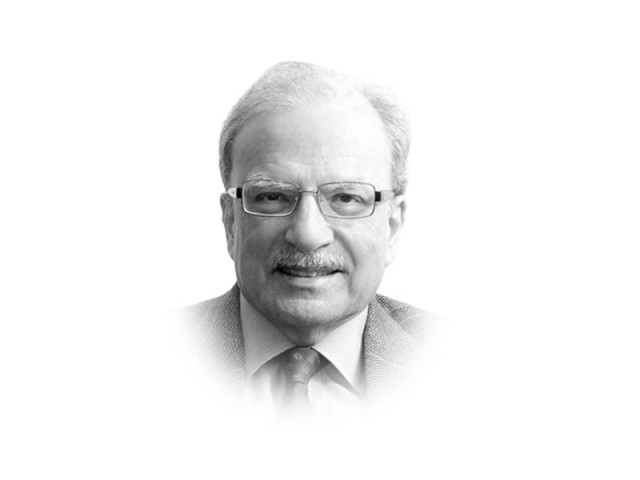Challenges for the new US administration
New American president will need to be fully aware of various international developments occurred in the last decade

The writer is a former caretaker finance minister and served as
vice-president at the World Bank
In addition, there are three world regions that will affect the global system. All are unstable and could, in different ways, disturb the world order. The European Union, once held as an example of how diverse countries could work together to fashion an economic system that would benefit the entire European citizenry, is now under enormous pressure that may retard its progress towards greater regional cooperation. Europe has not found a way to accommodate new arrivals into the member countries. The refugee crisis that originated in the Middle East has led to the rise of nationalism in several parts of the continent. It is this that had led to two bloody conflagrations of the 20th century. The newcomers are mostly the followers of a religion that is in a state of exceptional turmoil. It will take time before that religion, Islam, with 1.6 billion adherents, finds peace within itself.
But the European experiment has not been challenged only by the unwanted influx of Muslim refugees from the troubled countries of the Middle East. There is also the movement of people within the continent; from the region’s less developed countries to those where there are good job projects. It is the large arrival of workers from Poland that led to the decision by voters in a referendum called by the government to determine whether Britain should continue to reside within the European Union. The vote unexpectedly went in favour of leaving the Union and setting the stage for Brexit.
The second region in turmoil is the Middle East. Robert Zoellick, the former president of the World Bank, wrote a long essay for the Financial Times speculating about the world’s future shape. The article titled, “Shaping the post-Obama world,” explored options that are likely to be available to President Barack Obama’s successor. The author is concerned in particular with the Middle East. “A century-old order in the Middle East has broken down into a brutal struggle for power between tribes and sects,” he wrote. “Arabs, Iranians and Turks manipulate the warring factions as they strive for local hegemony. Countries across the region have stumbled repeatedly as they have tried to establish modern market economies.” While he seemed to lament the passing of the old order, he should have recognised that it was unstable. It couldn’t survive since it was based on the assumption that old colonial powers from Europe, and later joined by the United States, could not have sustained their influence in the area.
Central Asia is the third area that needs to be attended to even though it does not figure prominently in today’s news. It is made up of the five “-stans” that were once part of the Soviet Union along with Afghanistan. These six are landlocked countries looking to break out of their isolation. At this time, China, with its “One Road, One Belt” project, is the most active but Russia would like to reassert itself while India is also looking for some opportunities to gain a presence.
In finding its way in this regional thicket, the new United States leadership will work with individual countries. While Europe has a regional identity -- the European Union -- the other two have not created institutional mechanisms that could serve their collective interests. How Washington works out its relations with Iran and Saudi Arabia will have enormous consequences for the future of the Middle East and Central Asia. In terms of bilateral relations, Washington will have to find a way of containing North Korea -- at this moment, the most unpredictable nation on Earth.
All the nations mentioned in this discussion are repositioning themselves in terms of their relations with the United States. This is happening as China develops its own sphere of influence. Initially, President Obama would have liked to work with China and create a new global order built on top of the one that took shape after the conclusion of World War II. That order worked well as long as its domination by the United States went unchallenged. The challenge came initially from China as that country increased its economic power by growing its gross national product at an unprecedented rate and stretched over an exceptionally long period of time. The size of the Chinese economy is now 32 times its size in 1980 when it started to open to the world. According to one way of estimating national income – the purchasing power parity – China probably overtook the United States in the last quarter of 2015. Even with a significant slowing down in the rate of increase in its GDP, the gap between the size of its economy and that of the US will continue to increase. The biggest challenge the new administration in Washington will face as it begins to settle down in late January 2017 will, therefore, be the accommodation of China.
Published in The Express Tribune, October 24th, 2016.
Like Opinion & Editorial on Facebook, follow @ETOpEd on Twitter to receive all updates on all our daily pieces.














COMMENTS
Comments are moderated and generally will be posted if they are on-topic and not abusive.
For more information, please see our Comments FAQ